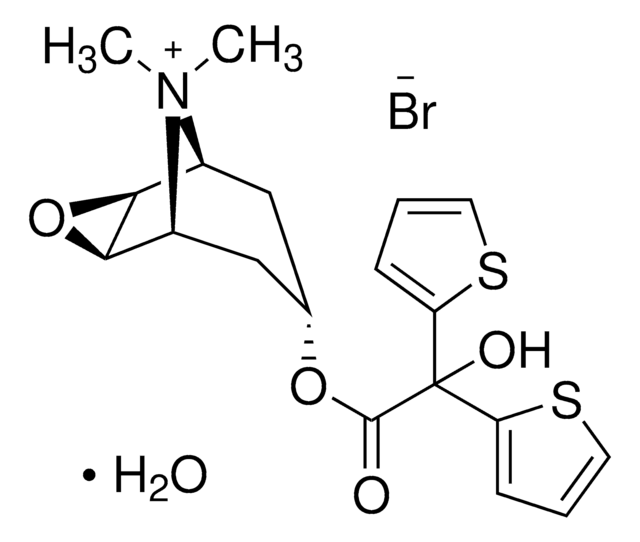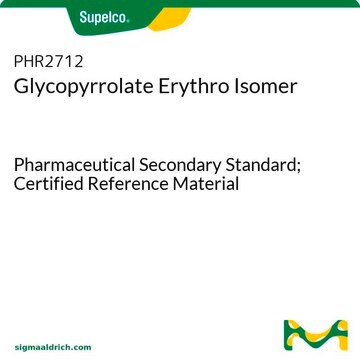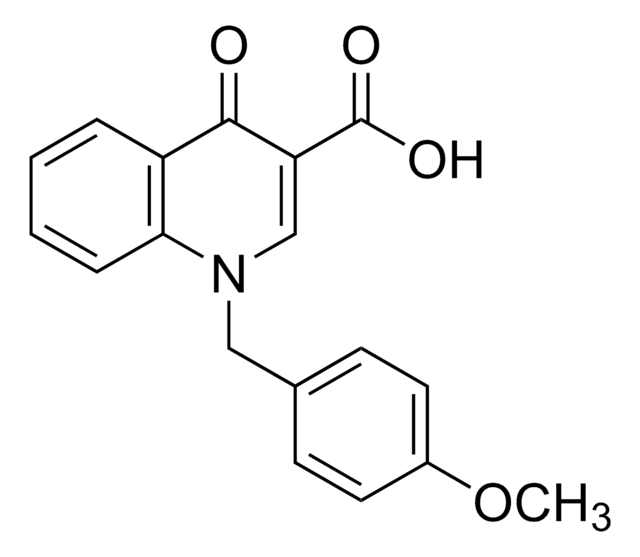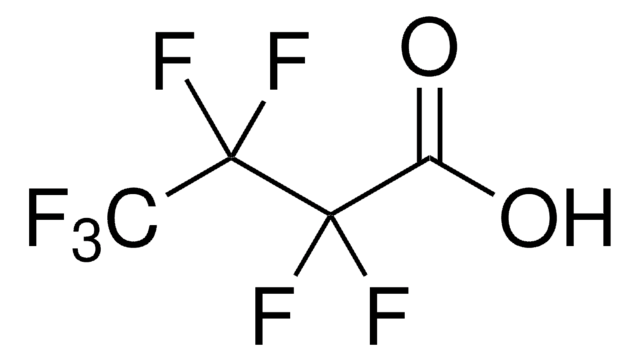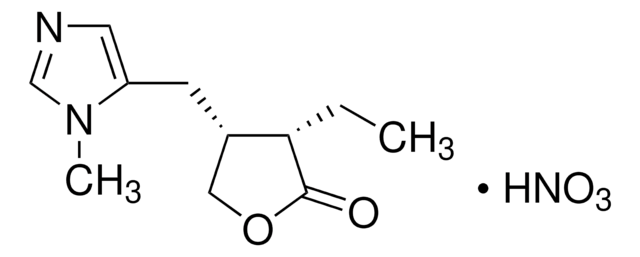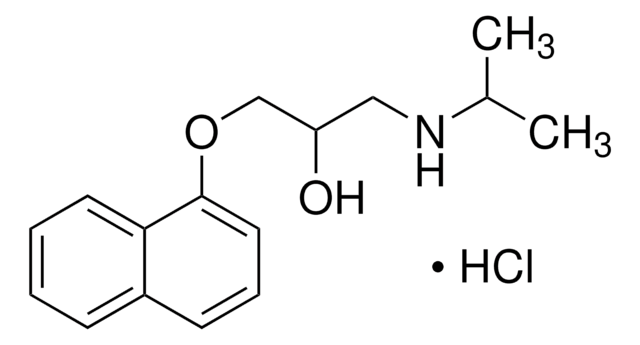SML0029
Glycopyrrolate
≥98% (HPLC)
Synonym(s):
α-cyclopentylmandelic acid ester with 3-hydroxy-1,1-dimethylpyrrolidinium bromide, 1-methyl-3-pyrrolidyl α-cyclopentylmandelate methobromide, 1-methyl-3-pyrrolidyl α-phenyl-α-cyclopentylglycolate methobromide, 3-(2-phenyl-2-cyclopentylglycoloyloxy)-1,1-dimethylpyrrolidinium bromide, 3-hydroxy-1,1-dimethylpyrrolidinium bromide α-cyclopentylmandelate, AHR-504, Copyrrolate, Gastrodyn, NSC 250836, NSC 251251, NSC 251252, NVA-237, glycopyrronium bromide
About This Item
Recommended Products
Quality Level
Assay
≥98% (HPLC)
form
powder
storage condition
desiccated
color
white to tan
solubility
H2O: ≥24 mg/mL
originator
Novartis
storage temp.
2-8°C
SMILES string
[Br-].C[N+]1(C)CCC(C1)OC(=O)C(O)(C2CCCC2)c3ccccc3
InChI
1S/C19H28NO3.BrH/c1-20(2)13-12-17(14-20)23-18(21)19(22,16-10-6-7-11-16)15-8-4-3-5-9-15;/h3-5,8-9,16-17,22H,6-7,10-14H2,1-2H3;1H/q+1;/p-1
InChI key
VPNYRYCIDCJBOM-UHFFFAOYSA-M
Gene Information
human ... CHRM1(1128) , CHRM3(1131)
Looking for similar products? Visit Product Comparison Guide
General description
Biochem/physiol Actions
Features and Benefits
Signal Word
Warning
Hazard Statements
Precautionary Statements
Hazard Classifications
Acute Tox. 4 Oral - Eye Irrit. 2 - Skin Irrit. 2 - STOT SE 3
Target Organs
Respiratory system
Storage Class Code
11 - Combustible Solids
WGK
WGK 3
Choose from one of the most recent versions:
Certificates of Analysis (COA)
Don't see the Right Version?
If you require a particular version, you can look up a specific certificate by the Lot or Batch number.
Already Own This Product?
Find documentation for the products that you have recently purchased in the Document Library.
Customers Also Viewed
Our team of scientists has experience in all areas of research including Life Science, Material Science, Chemical Synthesis, Chromatography, Analytical and many others.
Contact Technical Service

